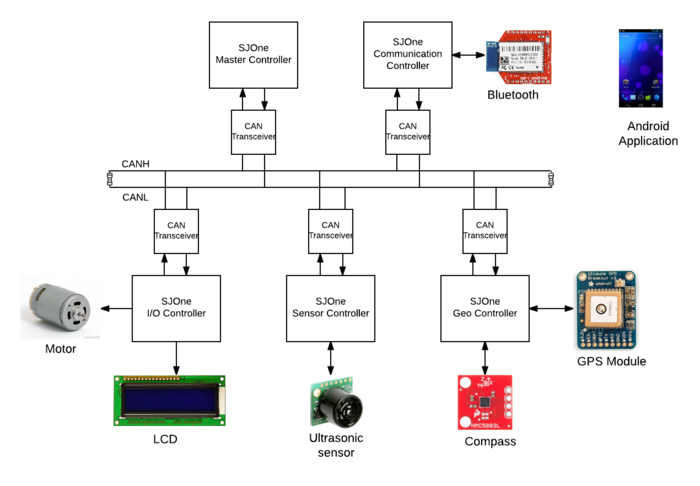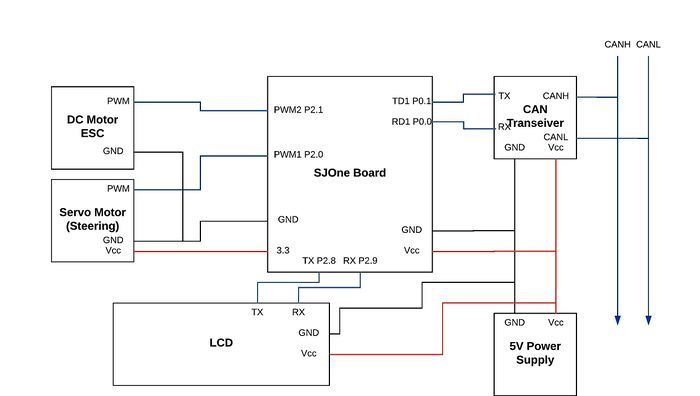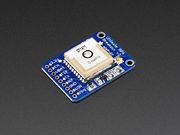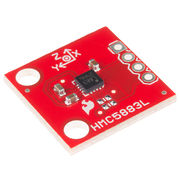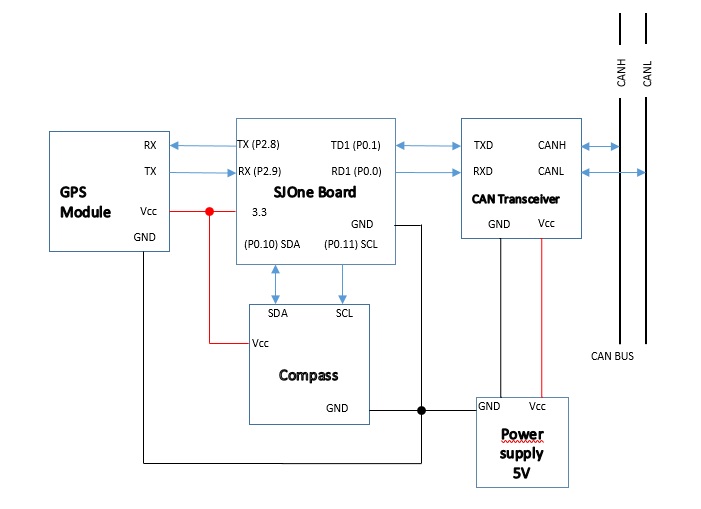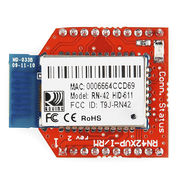F16: Kasper
Contents
- 1 Project Title
- 2 Abstract
- 3 Objectives & Introduction
- 4 Team Members & Responsibilities
- 5 Team Schedule
- 6 Parts List & Cost
- 7 DBC File Implementation
- 8 Sensor Controller
- 9 Motor & I/O Controller
- 10 Geographical Controller
- 11 Communication Bridge Controller
- 12 Master Controller
- 13 Conclusion
- 14 References
Project Title
Self Driving Car
Abstract
This project implements a self-driving car.
Objectives & Introduction
Objective of this project is to create a self driving car
System Block Diagram
Team Members & Responsibilities
We have used five controllers
- Sensor Controller
- Shruthi Narayan
- Rimjhim Ghosh
- Color coding: Text
- Motor & I/O Controller
- Prashant Aithal
- Chethan Keshava
- Color coding: Text
- Geographical Controller
- Ankit Gandhi
- Color coding: Text
- Master Controller
- Aajna Karki
- Spoorthi Mysore Shivakumar
- Color coding: Text
- Communication Bridge Controller
- Bharat Khanna
- Shantanu Vasishtha
- Color coding: Text
Team Schedule
| Sl No. | Start Date | End Date | Task | Status | Actual Completion Date |
|---|---|---|---|---|---|
| 1 | 09/20/2016 | 09/27/2016 |
|
Complete | 09/27/2016 |
| 2 | 09/28/2016 | 10/04/2016 |
|
Complete | 10/04/2016 |
| 3 | 10/05/2016 | 10/11/2016 |
|
Complete | 10/11/2016 |
| 4 | 10/12/2016 | 10/18/2016 |
|
Complete | 10/18/2016 |
| 5 | 10/19/2016 | 11/01/2016 |
|
Complete | |
| 6 | 11/01/2016 |
CAN COMMUNICATION DEMO |
Completed | ||
| 7 | 11/01/2016 | 11/07/2016 |
|
Completed | |
| 8 | 11/08/2016 |
PROJECT PROTOTYPE DEMO |
Completed | ||
| 9 | 11/08/2016 | 11/15/2016 |
|
Completed | |
| 10 | 11/16/2016 | 11/29/2016 |
|
Completed | |
| 11 | 11/29/2016 |
PROJECT PROTOTYPE DEMO 2 |
Completed | ||
| 12 | 11/29/2016 | 12/06/2016 |
|
Upcoming Task | |
| 13 | 12/07/2016 | 12/15/2016 |
|
Upcoming Task | |
| 14 | 12/17/2016 |
FINAL PROJECT DEMO |
Upcoming Task | ||
| 15 | 12/20/2016 |
PROJECT REPORT SUBMISSION |
Upcoming Task | ||
Parts List & Cost
| Item# | Part Desciption | Vendor | Qty | Cost $ |
|---|---|---|---|---|
| 1 | RC Car | From Preet | 1 | 0 |
| 2 | SJOne board | Preet | 5 | 80 |
| 3 | GPS Module | Adafruit | 1 | 40 |
| 4 | Triple Axis Magnetometer (Compass) | Sparkfun | 1 | 15 |
| 5 | Bluetooth Module | Sparkfun | 1 | 24.95 |
| 6 | LCD screen | Adafruit | 1 | 24.95 |
| 7 | Ultrasonic sensor | Sparkfun | 1 | 27.95 |
| 8 | Jumper cable | Amazon | 1 | 9.99 |
| 9 | DB9 Connector | HSC | 1 | 1 |
| 10 | CAN Transceiver | Microchip | 10 | 10 |
DBC File Implementation
The DBC file used for the project is as below:
VERSION ""
NS_ :
BA_ BA_DEF_ BA_DEF_DEF_ BA_DEF_DEF_REL_ BA_DEF_REL_ BA_DEF_SGTYPE_ BA_REL_ BA_SGTYPE_ BO_TX_BU_ BU_BO_REL_ BU_EV_REL_ BU_SG_REL_ CAT_ CAT_DEF_ CM_ ENVVAR_DATA_ EV_DATA_ FILTER NS_DESC_ SGTYPE_ SGTYPE_VAL_ SG_MUL_VAL_ SIGTYPE_VALTYPE_ SIG_GROUP_ SIG_TYPE_REF_ SIG_VALTYPE_ VAL_ VAL_TABLE_
BS_:
BU_: DBG MASTER GEO SENSOR MOTORIO BRIDGE
BO_ 100 STOP_CAR: 1 MASTER SG_ STOP_CAR_data : 0|8@1+ (1,0) [0|0] "" BRIDGE,GEO,SENSOR,MOTORIO,DBG BO_ 110 RESET: 1 MASTER SG_ RESET_data : 0|8@1+ (1,0) [0|0] "" BRIDGE,GEO,SENSOR,MOTORIO,DBG
BO_ 120 POWER_SYNC_ACK: 1 MASTER SG_ POWER_SYNC_ACK_data : 0|8@1+ (1,0) [0|0] "" BRIDGE,GEO,SENSOR,MOTORIO,DBG
BO_ 130 STOP_CMD_APP: 1 BRIDGE SG_ STOP_CMD_APP_data : 0|8@1+ (1,0) [0|0] "" MASTER,DBG BO_ 140 START_CMD_APP: 1 BRIDGE SG_ START_CMD_APP_data : 0|8@1+ (1,0) [0|0] "" MASTER,DBG
BO_ 200 MOTOR_POWER_SYNC: 1 MOTORIO SG_ MOTOR_POWER_SYNC_data : 0|8@1+ (1,0) [0|0] "" MASTER,DBG BO_ 210 SENSOR_POWER_SYNC: 1 SENSOR SG_ SENSOR_POWER_SYNC_data : 0|8@1+ (1,0) [0|0] "" MASTER,DBG BO_ 220 BRIDGE_POWER_SYNC: 1 BRIDGE SG_ GEO_POWER_SYNC_data : 0|8@1+ (1,0) [0|0] "" MASTER,DBG BO_ 230 GEO_POWER_SYNC: 1 GEO SG_ BRIDGE_POWER_SYNC_data : 0|8@1+ (1,0) [0|0] "" MASTER,DBG
BO_ 300 MOTORIO_HEARTBEAT: 1 MOTORIO SG_ MOTORIO_HEARTBEAT_data : 0|8@1+ (1,0) [0|0] "" MASTER,DBG BO_ 310 SENSOR_HEARTBEAT: 1 SENSOR SG_ SENSOR_HEARTBEAT_data : 0|8@1+ (1,0) [0|0] "" MASTER,DBG BO_ 320 BRIDGE_HEARTBEAT: 1 BRIDGE SG_ BRIDGE_HEARTBEAT_data : 0|8@1+ (1,0) [0|0] "" MASTER,DBG BO_ 330 GEO_HEARTBEAT: 1 GEO SG_ GEO_HEARTBEAT_data : 0|8@1+ (1,0) [0|0] "" MASTER,DBG
BO_ 400 SENSOR_SONIC: 4 SENSOR SG_ SENSORS_SONIC_front_left : 0|8@1+ (1,0) [0|0] "" MASTER,MOTORIO,DBG SG_ SENSORS_SONIC_front_right : 8|8@1+ (1,0) [0|0] "" MASTER,MOTORIO,DBG SG_ SENSORS_SONIC_front_center : 16|8@1+ (1,0) [0|0] "" MASTER,MOTORIO,DBG SG_ SENSORS_SONIC_back : 24|8@1+ (1,0) [0|0] "" MASTER,MOTORIO,DBG BO_ 410 MOTORIO_DIRECTION: 3 MASTER SG_ MOTORIO_DIRECTION_speed : 0|8@1+ (1,0) [0|10] "" MOTORIO,DBG SG_ MOTORIO_DIRECTION_turn : 8|8@1+ (1,-4) [-3|3] "" MOTORIO,DBG SG_ MOTORIO_DIRECTION_direction : 16|8@1+ (1,0) [0|2] "" MOTORIO,DBG
BO_ 420 BRIDGE_TOTAL_CHECKPOINT: 1 BRIDGE SG_ BRIDGE_TOTAL_CHECKPOINT_NUMBER : 0|8@1+ (1,0) [0|0] "" MASTER,MOTORIO,DBG BO_ 430 RECEIVE_START_ACK: 1 MASTER SG_ RECEIVE_START_ACK_ack : 0|8@1+ (0,0) [0|0] "" BRIDGE,DBG BO_ 440 BLUETOOTH_DATA: 8 BRIDGE SG_ BLUETOOTH_DATA_LAT : 0|32@1+ (0.000001,0) [0|0] "" MASTER,DBG SG_ BLUETOOTH_DATA_LON : 32|32@1+ (0.000001,0) [0|0] "" MASTER,DBG
BO_ 450 NEXT_CHECKPOINT_DATA: 8 MASTER SG_ NEXT_CHECKPOINT_DATA_latitude : 0|32@1+ (0.000001,0) [0|0] "" GEO,DBG SG_ NEXT_CHECKPOINT_DATA_longitude : 32|32@1+ (0.000001,0) [0|0] "" GEO,DBG BO_ 460 COMPASS_DATA: 5 GEO SG_ COMPASS_DATA_speed : 0|8@1+ (1,0) [0|0] "" MASTER,DBG SG_ COMPASS_DATA_heading : 8|16@1+ (1,0) [0|0] "" MASTER,DBG SG_ COMPASS_DATA_bearing : 24|16@1+ (1,0) [0|0] "" MASTER,DBG BO_ 470 CURRENT_LOCATION_ACK: 1 BRIDGE SG_ CURRENT_LOCATION_ACK_ack : 0|8@1+ (1,0) [0|0] "" MASTER,GEO,DBG BO_ 480 GPS_LOCATION: 8 GEO SG_ GPS_LOCATION_latitude : 0|32@1+ (0.000001,0) [0|0] "" MASTER,BRIDGE,DBG SG_ GPS_LOCATION_longitude : 32|32@1+ (0.000001,0) [0|0] "" MASTER,BRIDGE,DBG BO_ 490 DISTANCE_TO_DESTINATION: 1 GEO SG_ DISTANCE_TO_DESTINATION_data : 0|8@1+ (0,0) [0|0] "" MASTER, MOTORIO,DBG
BO_ 500 BATTERY_STATUS: 1 SENSOR SG_ DISTANCE_TO_DESTINATION_status : 0|8@1+ (0,0) [0|0] "" MASTER, MOTORIO,DBG
CM_ BU_ DBG "Debug node used to determine whether the message is received by any other node"; CM_ BU_ DRIVER "Master Controller"; CM_ BU_ SENSOR "Sensor Controller"; CM_ BU_ MOTORIO "Motor I/O controller"; CM_ BU_ BRIDGE "BRIDGE Controller"; CM_ BU_ GEO "Geo Controller"; CM_ BO_ 2 "Sync message used to synchronize the controllers";
BA_DEF_ "BusType" STRING ; BA_DEF_ BO_ "GenMsgCycleTime" INT 0 0; BA_DEF_ SG_ "FieldType" STRING;
BA_DEF_DEF_ "BusType" "CAN"; BA_DEF_DEF_ "FieldType" ""; BA_DEF_DEF_ "GenMsgCycleTime" 0;
BA_ "GenMsgCycleTime" BO_ 300 1; BA_ "GenMsgCycleTime" BO_ 310 1; BA_ "GenMsgCycleTime" BO_ 320 1; BA_ "GenMsgCycleTime" BO_ 330 1; BA_ "GenMsgCycleTime" BO_ 400 10; BA_ "GenMsgCycleTime" BO_ 410 10; BA_ "GenMsgCycleTime" BO_ 450 10; BA_ "GenMsgCycleTime" BO_ 460 10; BA_ "GenMsgCycleTime" BO_ 470 10; BA_ "GenMsgCycleTime" BO_ 480 10;
Sensor Controller
Team Members & Responsibilities
- Shruthi Narayan
- Rimjhim Ghosh
Schedule
| SI No. | Start Date | End Date | Task | Status | Actual Completion Date |
|---|---|---|---|---|---|
| 1 | 10/5/2016 | 10/11/2016 |
|
Complete | 10/9/2016 |
| 2 | 10/12/2016 | 10/18/2016 |
|
Complete | 10/18/2016 |
| 3 | 10/19/2016 | 10/25/2016 |
|
Complete | 10/25/2016 |
| 4 | 10/26/2016 | 11/1/2016 |
|
In Progress | |
| 5 | 11/2/2016 | 11/8/2016 |
|
Upcoming Task | |
| 6 | 11/9/2016 | 11/15/2016 |
|
Upcoming Task | |
| 7 | 11/16/2016 | 11/22/2016 |
|
Upcoming Task | |
| 8 | 11/23/2016 | 11/29/2016 |
|
Upcoming Task | |
| 9 | 11/30/2016 | 12/6/2016 |
|
Upcoming Task | |
| 10 | 12/7/2016 | 12/17/2016 |
|
Upcoming Task |
Design & Implementation
The design section can go over your hardware and software design. Organize this section using sub-sections that go over your design and implementation.
Hardware Design
Discuss your hardware design here. Show detailed schematics, and the interface here.
Hardware Interface
In this section, you can describe how your hardware communicates, such as which BUSes used. You can discuss your driver implementation here, such that the Software Design section is isolated to talk about high level workings rather than inner working of your project.
Software Design
Show your software design. For example, if you are designing an MP3 Player, show the tasks that you are using, and what they are doing at a high level. Do not show the details of the code. For example, do not show exact code, but you may show psuedocode and fragments of code. Keep in mind that you are showing DESIGN of your software, not the inner workings of it.
Implementation
This section includes implementation, but again, not the details, just the high level. For example, you can list the steps it takes to communicate over a sensor, or the steps needed to write a page of memory onto SPI Flash. You can include sub-sections for each of your component implementation.
Testing & Technical Challenges
Describe the challenges of your project. What advise would you give yourself or someone else if your project can be started from scratch again? Make a smooth transition to testing section and described what it took to test your project.
Motor & I/O Controller
Team Members & Responsibilities
- Chethan Keshava
- Prashant Aithal
Schedule
| SI No. | Start Date | End Date | Task | Status | Actual Completion Date | |
|---|---|---|---|---|---|---|
| 1 | 09/27/2016 | 10/04/2016 |
|
Complete | 10/04/2016 | |
| 2 | 10/04/2016 | 10/11/2016 |
|
Complete | 10/07/2016 | |
| 3 | 10/11/2016 | 10/18/2016 |
|
Complete | 10/15/2016 | |
| 4 | 10/18/2016 | 10/25/2016 |
|
Complete | 10/24/2016 | |
| 5 | 10/25/2016 | 11/1/2016 |
|
Complete | 11/1/2016 | |
| 6 | 11/1/2016 | 11/15/2016 |
|
Complete | 11/15/2016 | |
| 7 | 11/15/2016 | 11/28/2016 |
|
Complete | 11/28/2016 | |
| 8 | 11/28/2016 | 12/05/2016 |
|
Upcoming Task |
Motor/IO Controller Software Design
Tasks
| Task Name | Purpose |
|---|---|
| Period Init | CAN Bus Initialization, Reset CAN Bus |
| Periodic 1Hz Callback | Check if CAN bus off and Reset bus. Reset the RPM counter. |
| Periodic 10Hz Callback | Drive car according to the commands received from Master controller |
| Periodic 100Hz Callback | |
| Periodic 1000Hz Callback |
Motor Pin Connections
The car battery accepts compatible Ni-MH batteries. The battery powers the ESC unit, which in turn drives the motor and also powers the steering servo. The SJ One board, ESC unit and steering servo should share a common ground in order for the PWM signals to have the same reference voltage. The CAN transceiver uses the 5V power supply and GND, as well as the P0.0 (CAN RX) and P0.1 (CAN TX) of the SJ One Board. P2.0 (PWM1) and P2.1 (PWM2) controls the steering and motor respectively. This is done by sending out PWM signals from the SJ One board that change the width of a 20ms period waveform. 1ms width represents a 0% duty cycle, 1.5ms width represents a 50% duty cycle, and 2ms width represents a 100% duty cycle.
| Node A Source | Node A Pin | Node B Source | Node B Pin | Description | |
|---|---|---|---|---|---|
| 3.3V Power Supply | 3.3V | SJOne Board | 3V3 | SJOne Power | |
| 2 | 3.3V Power Supply | GND | SJOne Board | GND | SJOne Ground |
| 3 | CAN Transceiver | CAN Tx | SJOne Board | P0.1 (Tx) | SJOne - CAN Tx |
| 4 | CAN Transceiver | CAN Rx | SJOne Board | P0.0 (Rx) | SJOne - CAN Rx |
| 5 | CAN Transceiver | 5V | 5V Power Supply | 5V | SJOne - CAN Power |
| 6 | CAN Transceiver | Ground | 5V Power Supply | GND | SJOne - CAN Ground |
| 7 | CAN Transceiver | CANL | CAN BUS | CANL | CANL to CAN BUS |
| 8 | CAN Transceiver | CANR | CAN BUS | CANR | CANR to CAN BUS |
| Steering Servo | PWM Port | SJOne Board | P2.0 PWM | Steering Control | |
| 10 | Steering Servo | Ground | SJOne Board | GND | Common ground for reference voltage |
| 11 | ESC/Motor | PWM Port | SJOne Board | P2.1 PWM | Motor Control |
| 12 | ESC/Motor | Ground | SJOne Board | GND | Common ground for reference voltage |
DC Motor
|
A DC motor converts direct current electrical power into mechanical power. The most common types rely on the forces produced by magnetic fields. Pulse width modulation (PWM) is used to control the motor. One advantage is that the power loss in the switching transistor is small because the transistor is either fully “ON” or fully “OFF”. As a result the switching transistor has a much reduced power dissipation giving it a linear type of control which results in better speed stability. The RC Car came with the motor that needed 7.4V of power supply to work. The motor has the power to run the car at a maximum speed of the 35mph. |
File:BLDC.gif |
| S.R. | ESC Wire Pins | SJOne Board Pins |
|---|---|---|
| 1 | Vcc | - |
| 2 | GND | GND |
| 3 | Speed Control | P2.1 |
|
DC motor is controlled with the help of three wires coming out of the ESC. These wires are VCC, GND and Speed control. The VCC line is not used as required voltage is directly given to the motor through a battery, via ESC. The GND line and Speed control lines are connected to the ground and PWM pin of SJOne board. DC Motor Pin Connections The DC motor was driven using pwm2 i.e. pin P2.1 of the SJOne board. In-built PWM generation function was used. It requires two parameters, one is pin being used and the other being the frequency. |
Servo Motor
|
The RC Car came with a digital servo motor. The motor works without ESC. We can directly control this motor by giving PWM signal from our SJOne board. The below table contains information about PWM (duty cycle) given to the motor and the corresponding turns taken by the car. |
250px |
|
Servo motor is controlled with the help of three wires coming out of the servo motor. The wires are VCC, GND and Direction control. The VCC is connected to the 3.3v. GND and direction control are connected to the ground and pwm pins of SJOne board.
Servo Motor Pin Connections We control the Servo motor using pwm1 i.e. pin P2.0 of the SJOne board. We configure the PWM pin using an in-build function which requires two parameters, one is the pin that we are using and the other is the frequency of the pwm. To set the duty cycle, in-build set function is used in which we are passing the duty cycle at which we want servo motor to work. |
300px |
Speed Feedback Encoder
Liquid Crystal Display
IO is the mode of interaction between user and car peripherals. It includes touch screen GLCD and headlights. LCD displays the car status while the touch screen allows the user to shift between various modes. The head and tail light is an easy and convenient way to know the state and transition of the car. The LCD is used to display vital parameters such as
- Speed
- Obstacle proximity
- GPS co-ordinates
- Current and heading compass zone
The touch screen GLCD uLCD32PTU has the following features
- Low-cost 3.2" LCD-TFT display graphics user interface solution.
- 240 x 320 VGA resolution, RGB 65K true to life colours, TFT screen with Integrated 4-Wire Resistive Touch Panel.
- Easy 5 pin interface to any host device: VCC, TX, RX, GND, RESET
- Powered by 4D-Labs PICASO processor.
- 2 x Asynchronous hardware serial ports (COM0, COM1), TTL interface, with 300 to 600K baud.
- On-board micro-SD memory card adaptor for multimedia storage and data logging purposes. HC memory card support is also available for cards larger than 4GB.
- 4.0V to 5.5V range operation (single supply).
Software Design
Show your software design. For example, if you are designing an MP3 Player, show the tasks that you are using, and what they are doing at a high level. Do not show the details of the code. For example, do not show exact code, but you may show psuedocode and fragments of code. Keep in mind that you are showing DESIGN of your software, not the inner workings of it.
Implementation
This section includes implementation, but again, not the details, just the high level. For example, you can list the steps it takes to communicate over a sensor, or the steps needed to write a page of memory onto SPI Flash. You can include sub-sections for each of your component implementation.
Testing & Technical Challenges
Describe the challenges of your project. What advise would you give yourself or someone else if your project can be started from scratch again? Make a smooth transition to testing section and described what it took to test your project.
Geographical Controller
Team Members & Responsibilities
- Ankit Gandhi
Schedule
| SI No. | Start Date | End Date | Task | Status | Actual Completion Date |
|---|---|---|---|---|---|
| 1 | 09/28/2016 | 10/4/2016 |
|
Complete | 10/6/2016 |
| 3 | 10/5/2016 | 10/11/2016 |
|
Complete | 10/10/2016 |
| 4 | 10/12/2016 | 10/18/2016 |
|
Complete | |
| 5 | 10/19/2016 | 10/25/2016 |
|
In Progress | |
| 6 | 10/26/2016 | 11/01/2016 |
|
Upcoming Task | |
| 7 | 11/02/2016 | 11/08/2016 |
|
Upcoming Task | |
| 8 | 11/09/2016 | 12/05/2016 |
|
Upcoming Task |
Design & Implementation
The design section can go over your hardware and software design. Organize this section using sub-sections that go over your design and implementation.
GPS Module
The breakout is built around the MTK3339 chipset, a no-nonsense, high-quality GPS module that can track up to 22 satellites on 66 channels
- -165 dBm sensitivity, 10 Hz updates, 66 channels
- 5V friendly design and only 20mA current draw
- RTC battery-compatible
- Internal patch antenna + u.FL connector for external active antenna
The Compass Module - HMC5883L
Compass module is based on Honeywell’s HMC5883L. When current flows through a wire, a magnetic field is created. This is the basic principle behind electromagnets. This is also the principle used to measure magnetic fields with a magnetometer. The direction of Earth's magnetic fields affects the flow of electrons in the sensor, and those changes in current can be measured and calculated to derive a compass heading.
The features of HMC5883L are:
- Simple I2C interface
- 2.16-3.6VDC supply range
- Low current draw
- 5 milli-gauss resolution
Hardware Design
Discuss your hardware design here. Show detailed schematics, and the interface here.
Hardware Interface
In this section, you can describe how your hardware communicates, such as which BUSes used. You can discuss your driver implementation here, such that the Software Design section is isolated to talk about high level workings rather than inner working of your project.
Software Design
Show your software design. For example, if you are designing an MP3 Player, show the tasks that you are using, and what they are doing at a high level. Do not show the details of the code. For example, do not show exact code, but you may show psuedocode and fragments of code. Keep in mind that you are showing DESIGN of your software, not the inner workings of it.
Implementation
This section includes implementation, but again, not the details, just the high level. For example, you can list the steps it takes to communicate over a sensor, or the steps needed to write a page of memory onto SPI Flash. You can include sub-sections for each of your component implementation.
Testing & Technical Challenges
Describe the challenges of your project. What advise would you give yourself or someone else if your project can be started from scratch again? Make a smooth transition to testing section and described what it took to test your project.
Communication Bridge Controller
Team Members & Responsibilities
- Bharat Khanna
- Shantanu Vashishtha
Schedule
| SI No. | Start Date | End Date | Task | Status | Actual Completion Date |
|---|---|---|---|---|---|
| 1 | 09/20/2016 | 09/27/2016 |
|
Complete | 09/27/2016 |
| 2 | 09/28/2016 | 10/4/2016 |
|
Complete | 10/9/2016 |
| 3 | 10/5/2016 | 10/11/2016 |
|
Complete | 10/11/2016 |
| 4 | 10/12/2016 | 10/18/2016 |
|
Complete | 10/18/2016 |
| 5 | 10/19/2016 | 10/25/2016 |
|
Upcoming Task | |
| 6 | 10/26/2016 | 11/08/2016 |
|
Upcoming Task | |
| 7 | 11/9/2016 | 11/20/2016 |
|
Upcoming Task | |
| 8 | 11/21/2016 | 12/05/2016 |
|
Upcoming Task |
Design & Implementation
The design section can go over your hardware and software design. Organize this section using sub-sections that go over your design and implementation.
Bluetooth Module
RN42XV is built around Microchip's RN42 low power Bluetooth module. Some features of this module are as follows
- Based on the popular 2 x 10 (2mm) socket footprint.
- Voltage range: (3-3.6)Volts
- Current range: 26 μA sleep, 3 mA connected, 30 mA transmit.
- UART data connection interface.
- Sustained data rates: 240 Kbps (slave), 300 Kbps (master)
- Transmission range up to 60 feet (20 m) distance, +4 dBm output transmitter, -80 dBm typical receive sensitivity.
- FHSS/GFSK modulation, 79 channels at 1-MHz intervals.
Hardware Design
The interface between Bluetooth module and controller is as shown in figHardware Interface
In this section, you can describe how your hardware communicates, such as which BUSes used. You can discuss your driver implementation here, such that the Software Design section is isolated to talk about high level workings rather than inner working of your project.
Software Design
Show your software design. For example, if you are designing an MP3 Player, show the tasks that you are using, and what they are doing at a high level. Do not show the details of the code. For example, do not show exact code, but you may show psuedocode and fragments of code. Keep in mind that you are showing DESIGN of your software, not the inner workings of it.
Implementation
This section includes implementation, but again, not the details, just the high level. For example, you can list the steps it takes to communicate over a sensor, or the steps needed to write a page of memory onto SPI Flash. You can include sub-sections for each of your component implementation.
Testing & Technical Challenges
Describe the challenges of your project. What advise would you give yourself or someone else if your project can be started from scratch again? Make a smooth transition to testing section and described what it took to test your project.
Master Controller
Team Members & Responsibilities
- Aajna Karki
- Spoorthi Mysore Shivakumar
Schedule
| SI No. | Start Date | End Date | Task | Status | Actual Completion Date |
|---|---|---|---|---|---|
| 1 | 09/26/2016 | 10/05/2016 |
|
Complete | 10/05/2016 |
| 2 | 10/06/2016 | 10/18/2016 |
|
Complete | 10/18/2016 |
| 3 | 10/19/2016 | 10/25/2016 |
|
Complete | 10/25/2016 |
| 4 | 10/26/2016 | 11/07/2016 |
|
Complete | 11/07/2016 |
| 5 | 11/08/2016 | 11/15/2016 |
|
Complete | 11/20/2016 |
| 6 | 11/16/2016 | 11/29/2016 |
|
In Progress | |
| 7 | 11/29/2016 | 12/06/2016 |
|
Upcoming Task | |
| 8 | 12/06/2016 | 12/15/2016 |
|
Upcoming Task |
Design & Implementation
The design section can go over your hardware and software design. Organize this section using sub-sections that go over your design and implementation.
Hardware Design
Discuss your hardware design here. Show detailed schematics, and the interface here.
Hardware Interface
In this section, you can describe how your hardware communicates, such as which BUSes used. You can discuss your driver implementation here, such that the Software Design section is isolated to talk about high level workings rather than inner working of your project.
Software Design
Show your software design. For example, if you are designing an MP3 Player, show the tasks that you are using, and what they are doing at a high level. Do not show the details of the code. For example, do not show exact code, but you may show psuedocode and fragments of code. Keep in mind that you are showing DESIGN of your software, not the inner workings of it.
Implementation
This section includes implementation, but again, not the details, just the high level. For example, you can list the steps it takes to communicate over a sensor, or the steps needed to write a page of memory onto SPI Flash. You can include sub-sections for each of your component implementation.
Testing & Technical Challenges
Describe the challenges of your project. What advise would you give yourself or someone else if your project can be started from scratch again? Make a smooth transition to testing section and described what it took to test your project.
My Issue #1
Discuss the issue and resolution.
Conclusion
Conclude your project here. You can recap your testing and problems. You should address the "so what" part here to indicate what you ultimately learnt from this project. How has this project increased your knowledge?
Project Video
Upload a video of your project and post the link here.
Project Source Code
References
Acknowledgement
Any acknowledgement that you may wish to provide can be included here.
References Used
List any references used in project.
Appendix
You can list the references you used.
